Intel Xeon E Six-Core Review: E-2186G, E-2176G, E-2146G, and E-2136 Tested
by Ian Cutress on November 5, 2018 12:00 PM EST- Posted in
- CPUs
- Intel
- Xeon
- Enterprise CPUs
- Xeon E
Gaming: World of Tanks enCore
Albeit different to most of the other commonly played MMO or massively multiplayer online games, World of Tanks is set in the mid-20th century and allows players to take control of a range of military based armored vehicles. World of Tanks (WoT) is developed and published by Wargaming who are based in Belarus, with the game’s soundtrack being primarily composed by Belarusian composer Sergey Khmelevsky. The game offers multiple entry points including a free-to-play element as well as allowing players to pay a fee to open up more features. One of the most interesting things about this tank based MMO is that it achieved eSports status when it debuted at the World Cyber Games back in 2012.
World of Tanks enCore is a demo application for a new and unreleased graphics engine penned by the Wargaming development team. Over time the new core engine will implemented into the full game upgrading the games visuals with key elements such as improved water, flora, shadows, lighting as well as other objects such as buildings. The World of Tanks enCore demo app not only offers up insight into the impending game engine changes, but allows users to check system performance to see if the new engine run optimally on their system.
| AnandTech CPU Gaming 2019 Game List | ||||||||
| Game | Genre | Release Date | API | IGP | Low | Med | High | |
| World of Tanks enCore | Driving / Action | Feb 2018 |
DX11 | 768p Minimum |
1080p Medium |
1080p Ultra |
4K Ultra |
|
All of our benchmark results can also be found in our benchmark engine, Bench.
| Game | IGP | Low | Medium | High |
| Average FPS |  |
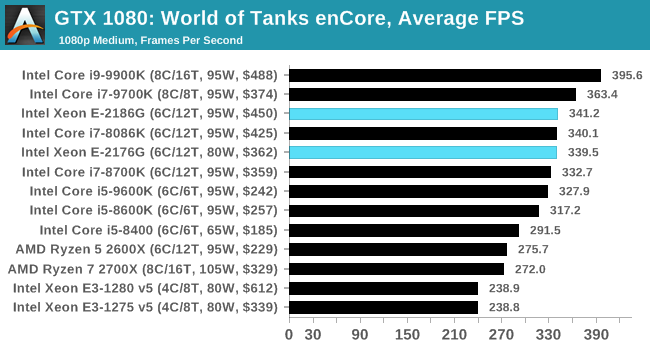 |
 |
 |
| 95th Percentile | 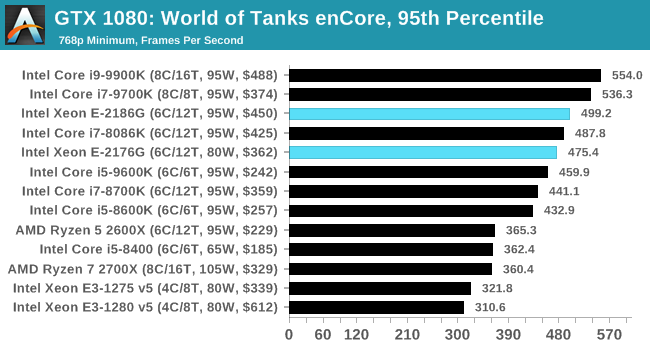 |
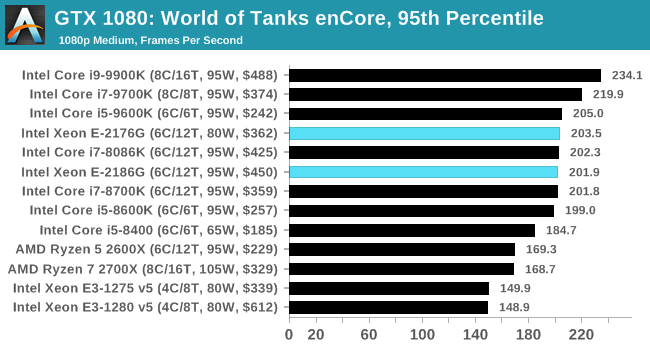 |
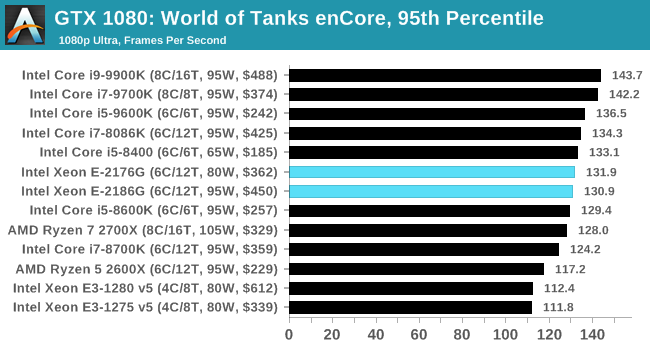 |
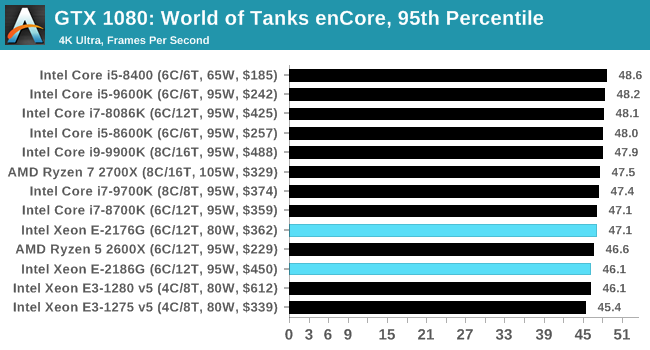 |


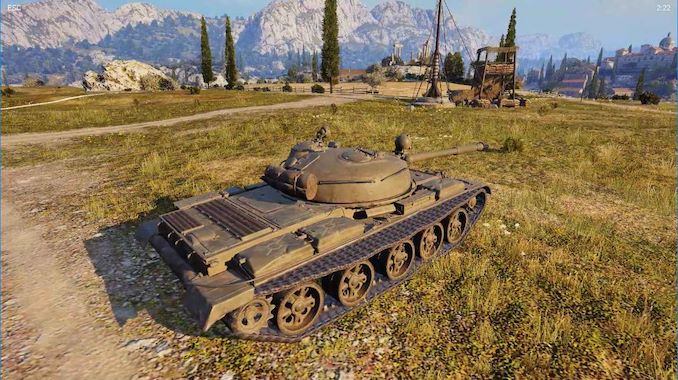









48 Comments
View All Comments
A5 - Monday, November 5, 2018 - link
Smaller/cheaper systems for places that still self-host? Not everyone needs (or has the budget for) a 28-core monster box.I have to admit I'm not sure why it gets a 21-page AT writeup, but I think their low-end enterprise tests do decent traffic.
jtd871 - Monday, November 5, 2018 - link
Ya, and there are still a truly dizzying array of SKUs on display here when only maybe 4 might be justifiable for a 6-core workstation CPU market. Gotta love product segmentation.speculatrix - Tuesday, November 6, 2018 - link
I agree, small businesses (like me) want a small dev server to run VMs, and an eight core (no HT) single socket box could be reasonably cost effective. There's a big jump in pricing to dual socket high core counts.notb - Wednesday, November 7, 2018 - link
These CPUs are primarily designed for workstations and purpose built servers. There is quite a huge market between home PCs and AWS datacenters. :-PThere are multiple scenarios for which these Xeons will be the most cost-effective or even the fastest ECC-enabled CPUs available. Intel can provide a perfect CPU for a particular use case, so they do. :-)
twtech - Sunday, November 18, 2018 - link
Workstation reliability. Consumer class systems are pretty reliable, but Xeons with ECC even more so.Azurael - Monday, November 5, 2018 - link
So am I reading this correctly: Intel expects people to pay extra for old Coffee Lake chips and buy a more expensive, niche motherboard just to get ECC support when every single AMD Ryzen CPU supports ECC?That would be laughable if the 'free' market actually worked, but given the fact that Intel commands such control over the system integrators and the PC industry as a whole, SIs aren't even marketing AMD hardware to their business customers (or home users for the most part, for that matter...)
kpb321 - Monday, November 5, 2018 - link
Intel has always loved to charge extra where ever they can. ECC, Virtualization and any number of other things over the years so that really isn't a surprise. On the Ryzen side my understanding is that while AMD doesn't disable it in the CPUs most consumer motherboards don't support ECC as it requires some extra memory traces. So while the AMD situation is better you can't just use ECC in any random Ryzen system.Azurael - Monday, November 5, 2018 - link
AFAIK you are correct in that actual VIOS-side support is hit and miss and rrequires motherboard manufacturers to actually implement the watchdog calls to halt the system on a double fault (although ECC does correct single bit faults without any intervention so long as it's working.) but it requires no extra hardware and would be easily implemented by an SI trying to sell a complete Ryzen system to a customer, so that's really no excuse.Azurael - Monday, November 5, 2018 - link
*BIOS-side, obviously (technically wrong anyway but I guess we can consider EFI a type of BIOS if we aren't going by strict definitions.) Stupid on-screen keyboard.kpb321 - Monday, November 5, 2018 - link
Doesn't it also require additional traces on the MB to transmit the ECC info as the memory controller is doing the ECC calculation and checking not the memory module itself?